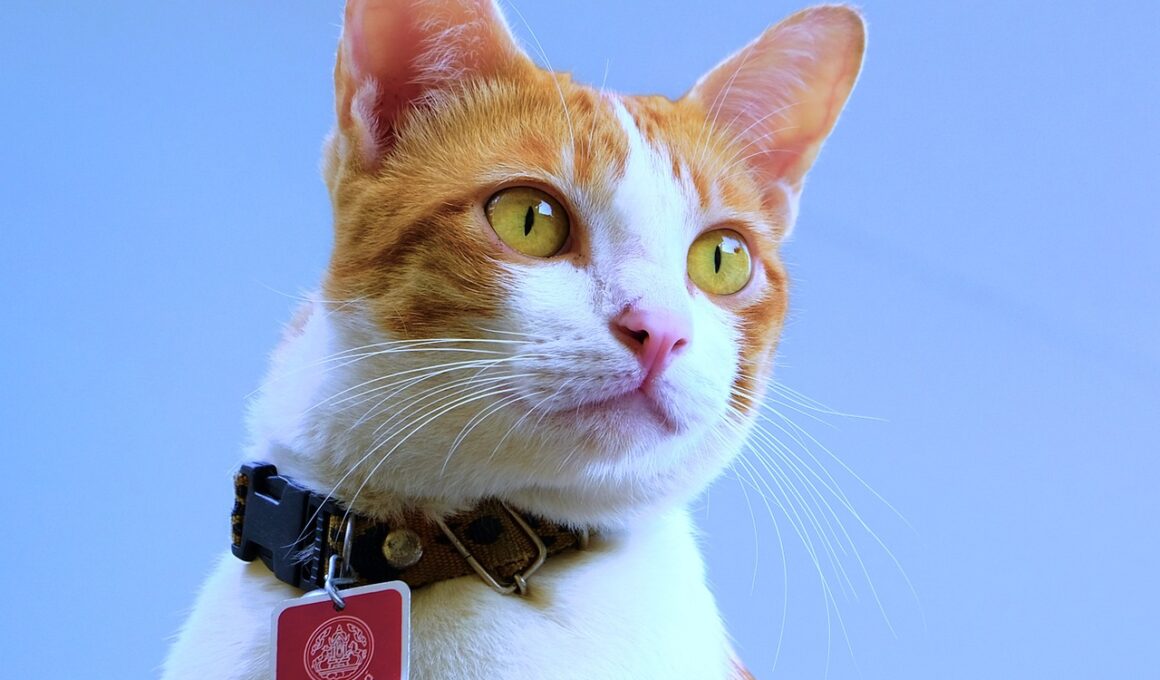Understanding the Lifespan of Flea Collars for Cats
When it comes to managing flea infestations in cats, flea collars are often a popular choice among pet owners. These collars are designed to repel or kill fleas, providing a convenient and long-lasting option for prevention. However, the effectiveness of these collars can vary significantly based on several factors. One primary consideration is the active ingredients used in the collar. Many collars contain insecticides like imidacloprid or flumethrin, which are potent against fleas. Moreover, the lifespan of a flea collar can depend on its material and how well the cat tolerates it. It is essential to implement regular checks and maintenance as needed, such as adjusting the collar snugly around the cat’s neck without being too tight to ensure optimal effectiveness. Some collars are designed to last for several months, while others may lose potency sooner. Understanding the intended duration of effectiveness can help you make informed decisions about replacing the collar when needed. Checking for any signs of flea activity during inspections is crucial for confirming the collar’s efficacy.
Factors Influencing Flea Collar Lifespan
The lifespan and effectiveness of flea collars can be influenced by various factors, including the environment in which your cat spends most of its time. For instance, cats that frequently venture outdoors may require more durable collars as they are exposed to a higher flea population. Additionally, the specific activities your cat engages in can impact the collar’s longevity. High-energy cats that play frequently or groom excessively might wear down the collar faster than more sedentary pets. Factors like humidity and weather conditions can also affect the collar’s efficacy. Warm and humid climates may lead to quicker degradation of the chemicals meant to repel fleas. Regular bathing can also reduce the collar’s lifespan, as water can wash away essential ingredients. Be sure to choose a collar specifically designed for active outdoor cats if applicable. Furthermore, the brand and type of flea collar selected will inherently influence how long the product remains functional and effective against flea infestations.
Regularly monitoring your cat for fleas and adjusting the usage of the collar is vital for effective pest control. When assessing the flea collar, observe your cat’s skin for any signs of irritation or unusual grooming behavior. These can indicate a reaction to the collar, leading to an ineffective solution for flea management. Furthermore, combining flea collars with other preventative measures, including topical treatments or flea-focused shampoos, can significantly enhance overall effectiveness. The best approach to flea management often includes a multi-pronged plan tailored to both the environment and the individual needs of your cat. Many veterinarians recommend a comprehensive approach that includes regular grooming sessions and monitoring flea counts in the house. This holistic strategy ensures that you identify potential issues early, allowing for timely intervention and management. Utilizing flea collars as part of a wider strategy that includes home sanitization and pet hygiene is integral. Consistent communication with a veterinarian can help establish the best routine for your pet’s specific needs.
Proper Usage of Flea Collars
Using flea collars correctly is crucial to their effectiveness. It is essential to follow the manufacturer’s instructions thoroughly, as improper use can lead to suboptimal results. For instance, ensuring that the collar fits properly without being too tight is important for your cat’s comfort. You should be able to fit two fingers between the collar and your cat’s neck. Always take precautions when introducing a new collar, such as observing your cat for signs of discomfort or allergic reactions within the first few days. Moreover, keep in mind that flea collars usually do not serve as the sole method of flea control; they work best when supplemented with regular flea inspections and other preventative treatments. It can also be beneficial to consult your veterinarian regarding the use of a flea collar alongside other treatments. Your vet can advise on the best flea control options suitable for your cat’s age, health status, and activity levels. Employing a well-rounded strategy is essential for effective flea prevention.
It is vital to regularly check the condition and effectiveness of your cat’s flea collar throughout its lifespan. Look for signs of wear and tear, including fraying or fading, which can indicate decreased efficacy. For optimal effectiveness, it is wise to replace flea collars according to the manufacturer’s directions, typically every six to eight months. However, pets with exposure to high flea activity may need to replace their collars more frequently. Furthermore, after a period of prolonged usage, the active ingredients in the collar may lose their potency, rendering them ineffective against fleas. Therefore, staying attentive to changes in your cat’s behavior, such as increased scratching or flea activity, is crucial in determining when to replace the collar. Additionally, the proper storage of unused collars in a cool and dry environment can help preserve their effectiveness until needed. Adherence to guidelines contributes to the overall success of the flea prevention strategy and will keep your cat comfortable and healthy. Comprehensive monitoring, adjustment, and timely replacement are keys to ensuring an effective flea collar.
Benefits and Drawbacks of Using Flea Collars
Flea collars offer numerous benefits for cat owners struggling with flea infestations. One significant advantage is their simplicity and ease of use; once fitted, a collar requires minimal maintenance while providing ongoing protection. Additionally, flea collars can provide long-lasting relief that continues to kill fleas over an extended period. However, potential drawbacks include allergic reactions or skin irritations that some cats may experience. It’s essential to monitor your cat after introducing a new collar to ensure any adverse reactions are quickly addressed. Price points can also vary widely among brands, so it’s beneficial to compare options and identify a collar that maintains effectiveness without excessive financial burden. Always consider the longevity of the collar before making a purchase. Furthermore, collars may not effectively target all life stages of fleas, necessitating supplemental treatments. By weighing the benefits and drawbacks, you can make an informed decision about the best flea control strategy for your feline friend, ensuring optimal health and comfort in your home.
In conclusion, understanding the lifespan and effectiveness of flea collars is crucial in managing flea infestations in cats. Selecting the appropriate flea collar, using it properly, and effectively maintaining its usage can significantly impact its performance. Always take into consideration environmental factors, your cat’s activity levels, and potential allergic reactions. It’s wise to seek a veterinarian’s guidance for optimal results tailored to your pet’s specific needs. Additionally, regular inspections and timely replacements of the collar contribute to maintaining comprehensive flea management. Flea collars can provide effective prevention when used correctly and as part of a broader control strategy, reinforced by grooming, nutrition, and sanitation practices within the home. Combining multiple preventive measures offers the best chance of ensuring your cat remains flea-free while promoting its overall health. With the right knowledge in hand, cat owners can feel empowered in their efforts to keep their pets comfortable and free from flea-related issues. Staying proactive is the best method of safeguarding your beloved feline from the annoyance and discomfort that fleas can bring.


